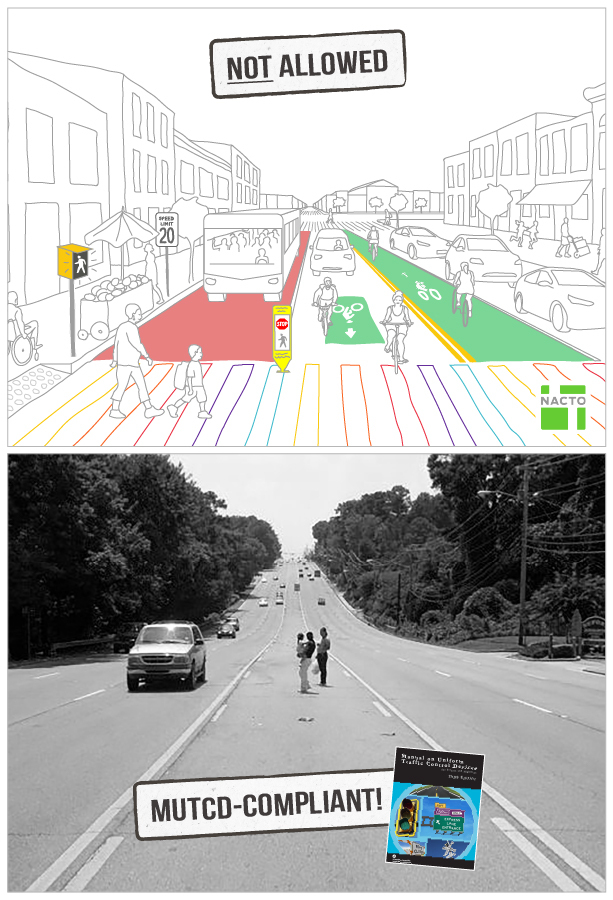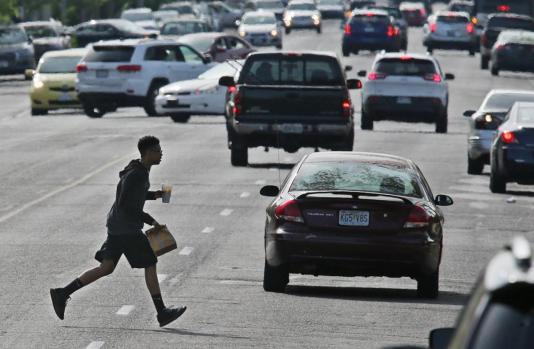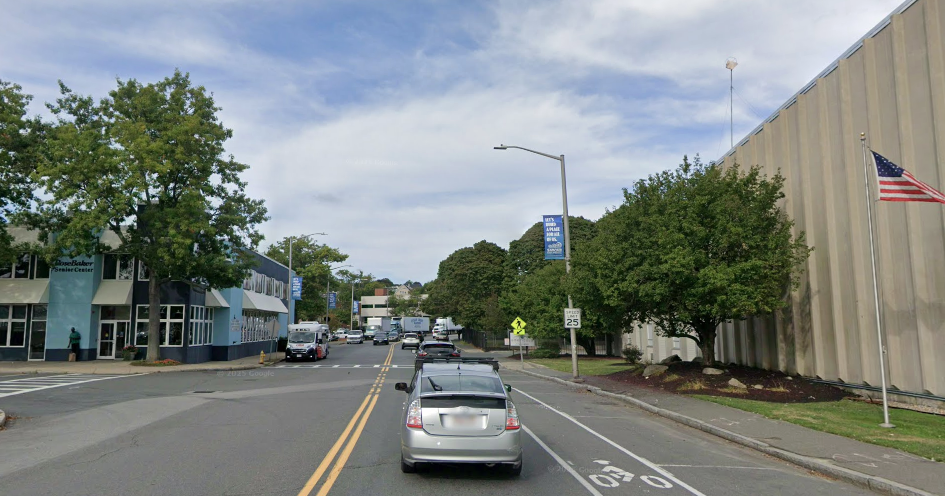MassDOT is calling on the Federal Highway Administration to update the Manual on Uniform Traffic Control Devices (MUTCD) — the document that establishes the design guidelines for America's deadly, car-focused roads — in hopes of making future road designs more attentive to the "safety of all users of the system with focus on people, regardless of what mobility vehicle/device they are using."

Although many of the Manual's recommendations are not legally binding, most traffic engineers adhere to its guidance for most roadway projects across the nation, and engineers often cite the Manual's car-centric recommendations when justifying road design choices that pose serious inconveniences and risks of injury or death for pedestrians, cyclists, and wheelchair users.
In a May 13 letter addressed to the agency's former boss, Acting Administrator of the Federal Highway Administration Stephanie Pollack, MassDOT officials urged the manual's authors to adapt more quickly to new mobility options and focus more on the safety of street users who aren't in cars.
The letter notes that the Manual hasn't been updated since 2009; since then, the Commonwealth has welcomed new bikesharing systems that log millions of trips a year and emergent interest from new micromobility services.
"MassDOT is a state agency that embraces mobility advancements," the letter states. "However, the manual plays a very important role in how fast these advancements can be implemented. This, combined with the unique density of use within the Commonwealth, requires a quicker advancement of manual updates and inputs."
The letter also includes a bulleted list of specific requests for the Manual's next edition, including:
- A focus on "the interaction and safety of all users of the system with focus on people, regardless of what mobility vehicle/device they are using,"
- "Providing additional guidance and flexibility for placemaking projects in the Right-of-Way, i.e. Shared Streets and other placemaking efforts,"
- "Providing a flexible approach to the establishment of speed limits that separates out limited access roadways from the roadway network that serve all road users and accounts for safety and land use,"
- Note: this recommendation appears to take aim at the Manual's "85th percentile" method for setting speed limits, which says, in effect, that if engineers measure the speeds of 100 random drivers on a roadway, in ideal weather conditions and no traffic, then the speed of the 15th-fastest driver should determine the posted speed limit. The 85th percentile rule was debunked in a 2017 National Transportation Safety Board report, but it's still enshrined in the MUTCD. MassDOT is also in the process of reexamining its speed limit policies with a focus on Vision Zero principles.
- "Encouraging the inclusion of safe bicycle and pedestrian facilities ... e.g., pedestrian crossing warrants should not be based on number of people who currently cross, but instead if people would cross to make it safe and comfortable and able to do so."
- The current MUTCD recommends that crosswalks and traffic signals to allow safe crossings should not be installed on dangerous streets unless a certain number of pedestrians are already risking their lives to cross. Planner Don Kostelec notes the cruelty of how this rule is applied in practice in this video from Garden City, Idaho:






